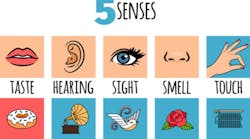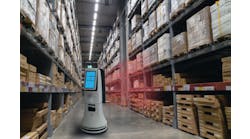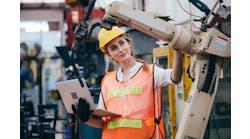By Dr. Flavio Bonomi, Lynx Software Board technology advisor
As more is demanded of collaborative robots (cobots) in industrial manufacturing, especially coming out of the COVID-19 pandemic, it will become increasingly important that these machines are advancing in ways that increase their technical capabilities and, therefore, their level of safety when working alongside humans. The next few years will be key in making significant, innovative strides with cobots, dependent on integrating sensors in new applications.
Soon, cobots will widely be equipped with not only vision (which is already underway), but also the ability to hear, taste, touch and smell. Below, I have shared why each of these senses will be critical and what these added capabilities will enable cobots to add to the manufacturing industry.
Hearing
Sound guides our actions, much more than we might think— the tone of a colleague can steer a conversation in one direction, a smoke alarm ringing in the next room can alert us to danger. In the near future, cobots will be able to listen to voice commands and other sounds, reacting appropriately based on what they hear. They will carry out tasks that are informed by what they are hearing and, most importantly, will be able to identify noises that can let them know that something in the manufacturing space is not behaving normally.
Tasting
Taste is truly critical to life; it informs our food intake, our nutrition and our health. Taste will soon become just as important to cobots as they will test materials that, for example, are being considered for human patients to consume. Pharmaceutical manufacturers will deploy cobots to test the mixing of specific compounds to ensure that the medicine isn’t harmful to human biology.
Touching
Touch is also critical to our daily lives—it helps us understand if a surface is too hot or cold, ultimately keeping us from harm. This is the same for cobots in the manufacturing space; not only will they be able to physically sense elements and react appropriately—much like we do—but they will also be able to distinguish if a material is smooth, sharp, or cool enough in the assembly line.
Smelling
Like our other senses, smell is incredibly important when it comes to letting us know that we could be in danger. However, in the case of sniffing something that may be unsafe, the source could very likely be invisible (like a gas leak). I imagine that smell will be a sense that is more limited within cobots, but could most critically be used for letting a manufacturing plant know that there are dangerous scents coming from a material or asset—potentially even a smell that humans would have never picked up on themselves. There are other inspiring ways the sense could be used by cobots as some companies are working on sensors that can smell substances within urine to detect certain cancers.
Seeing
While cobots are increasingly using vision, the capabilities of these systems will continue to improve. I envision machines beginning to understand gestures, for example. When cobots are in settings where there is a lot of noise, it will be beneficial for them to see and comprehend when they are being pointed in the direction of something or when a hand is raised indicating for them to stop what they are doing.
Now, cobots won’t be using these five senses overnight, but these capabilities will evolve over time and the manufacturing industry will experience great benefits from these human-like skills. As cobots begin to take on hearing, tasting, touching, smelling and advanced sight, they will become even stronger colleagues to the human workforce and will help factories maintain and improve their safety and efficiency.


